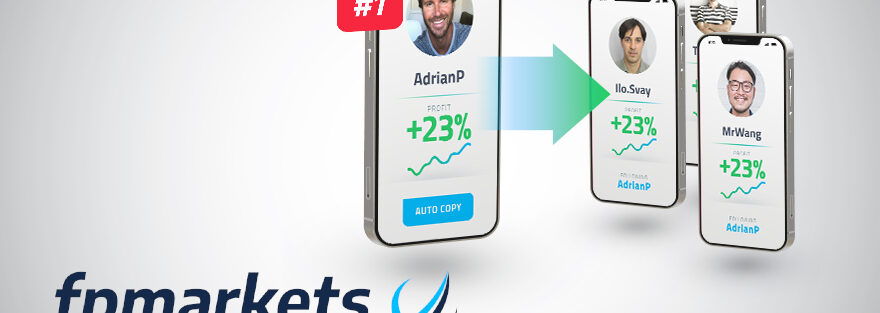Social trading has become an influential aspect of online trading, particularly within the forex market. This approach integrates the connectivity of social networks into the world of trading, enabling traders to analyze, discuss, and replicate the trading strategies of their peers or experienced traders. Let’s explore the concept, popularity, benefits, and risks associated with social trading, as well as address concerns about potential FP Markets Scam allegations.
Overview of Social Trading
Social trading is a form of investing that allows investors to observe the trading behavior of their peers or expert traders and to follow their investment strategies using copy trading or mirror trading techniques. This method provides a platform for traders to share information in real-time, including specific trades, strategies, and market analyses.
Popularity in the Forex Market
Community and Learning
Social trading has gained significant popularity in the forex market due to its community-oriented approach. It is particularly appealing to new traders as it provides a learning platform where they can watch the moves of more experienced traders and communicate with fellow participants.
Technology-Driven
The rise of social trading is closely linked to advancements in trading technology and internet connectivity, which have made it easier than ever for traders to connect with one another, share trading insights, and replicate successful trades in real-time.
Access to Global Markets
Social trading platforms give users access to a global pool of traders and a variety of trading styles, enhancing their ability to diversify their trading and investment strategies beyond local markets or familiar asset classes.
Benefits of Social Trading
Enhanced Learning Opportunities
New traders can learn from experienced ones by observing their strategies and trades. This practical exposure can accelerate a novice’s learning curve significantly.
Diversification of Trading Strategies
By following multiple traders who employ diverse trading strategies, less experienced traders can diversify their own approaches, which can help mitigate risks and improve potential returns.
Community Support
Social trading platforms often come with a built-in community where traders can discuss strategies, share advice, and provide mutual support during trading highs and lows.
Reduced Research Time
Traders can benefit from insights and analyses shared by others, reducing the amount of time needed for individual market research.
Risks Associated with Social Trading
Dependence on Other Traders
There is a risk of becoming overly reliant on the choices of other traders, which can be problematic if those traders begin to perform poorly.
Market Risk
Following other traders does not eliminate the inherent risks associated with forex trading. Market conditions can change rapidly, and even seasoned traders can make significant losses.
Misleading Information
The quality of traders on social platforms can vary, and some may not be as successful as they appear. It’s crucial to perform due diligence before deciding whom to follow.
Complexity and Overconfidence
The simplicity of copying trades might lead some users to underestimate the complexity of forex trading or to invest more than they can afford, driven by initial overconfidence.
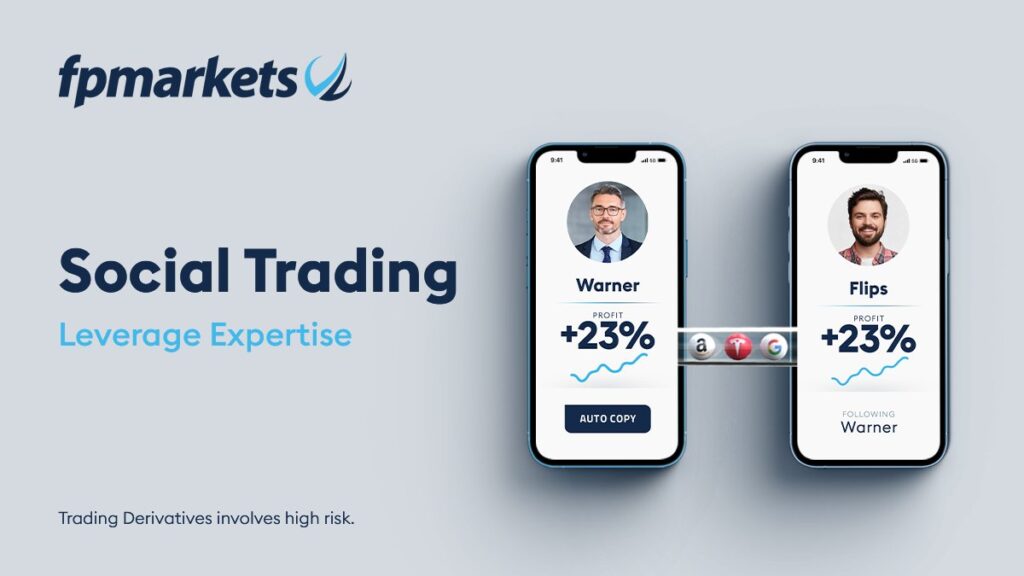
What is FP Markets Social Trading?
FP Markets Social Trading platform allows traders to access the dynamic world of social trading directly through a robust and user-friendly interface. This platform is designed to cater to traders who wish to engage with the forex market through a community-driven approach, leveraging the knowledge and experience of other traders.
Detailed Description of FP Markets’ Social Trading Platform
FP Markets’ social trading platform integrates social networking features into forex trading, enabling traders to follow, copy, and interact with each other. It simplifies the process of copying trades from experienced traders, making it accessible even to those new to the forex markets.
Key Features:
- Copy Trading: Users can automatically replicate the positions of selected traders in their own trading accounts. This is particularly beneficial for novice traders or those looking to diversify their trading strategies without extensive personal market analysis.
- Trader Rankings: The platform provides a ranking system that lists traders based on their performance metrics such as return on investment, risk level, and the number of followers. This helps users in selecting which traders to follow based on their risk tolerance and investment goals.
- Transparency: Detailed trading history and statistics for each trader are available, including historical performance, trading frequency, average holding time, and much more. This transparency helps users make informed decisions about whom to follow.
- Interaction and Community Engagement: The platform offers features for interaction among users, such as commenting, discussions, and sharing insights. This community aspect fosters a collaborative environment where traders can learn from each other.
- Risk Management Tools: Users have access to risk management options, allowing them to set limits on their follow-copy exposure and to manage their capital and risk effectively.
- Integration with Trading Platforms: FP Markets Social Trading is fully integrated with the broker’s existing trading platforms, such as MetaTrader 4 and MetaTrader 5. This integration provides a seamless trading experience, where social trading operations are executed alongside personal trading strategies.
How It Integrates with Other FP Markets Services
FP Markets Social Trading platform is part of a broader suite of trading services offered by FP Markets. Here’s how it integrates with other services:
- Seamless Account Management: Users can manage their social trading activities directly from their standard trading accounts with FP Markets. There’s no need for multiple accounts, making it simpler to manage overall trading activities.
- Unified Platform Experience: Integration with MetaTrader 4 and MetaTrader 5 ensures that users can engage in social trading while using the advanced tools and features of these popular platforms, such as technical analysis tools, expert advisors, and custom indicators.
- Educational Resources: Participants in social trading can also benefit from FP Markets’ extensive educational resources, including webinars, tutorials, and articles, which can help them understand market trends and improve their trading knowledge.
- Customer Support: Social traders benefit from FP Markets’ industry-leading customer support, which can assist with any issues related to social trading, account settings, and trade execution.

Getting Started with FP Markets Social Trading
Setting up a social trading account with FP Markets is a straightforward process designed to integrate seamlessly into the broker’s existing platforms. Here’s a detailed step-by-step guide on how to sign up and set up your social trading account, along with the required tools and initial configurations needed.
Step-by-Step Guide to Signing Up
1: Open an Account with FP Markets
- Action: If you don’t already have an account with FP Markets, you’ll need to create one. Visit the FP Markets website, navigate to the registration page, and complete the sign-up form. You will be asked to provide personal information such as your name, email, address, and financial experience.
2: Verify Your Account
- Action: To comply with regulatory requirements, you must verify your identity and residence. Upload a government-issued ID (passport or driver’s license) and a recent utility bill or bank statement that confirms your address.
3: Choose Your Trading Platform
- Action: Select which trading platform you prefer to use with social trading. FP Markets offers MetaTrader 4 and MetaTrader 5, both of which are compatible with its social trading services. Download and install your chosen platform.
4: Access the Social Trading Section
- Action: Once your account is set up and you have access to your trading platform, locate the social trading feature. This might be directly integrated into the platform, or you may need to access it via the FP Markets client portal.
5: Select Traders to Follow
- Action: Explore the list of available traders to follow. Use the performance metrics, risk assessments, and trader rankings provided by FP Markets to choose traders whose strategies align with your trading goals and risk tolerance.
6: Configure Copy Settings
- Action: Set up your copy trading settings. Decide how much capital you want to allocate to copying each trader and set any limits on trades, such as stop losses or take profits, to manage your risk effectively.
7: Monitor and Adjust
- Action: Regularly review the performance of your social trading portfolio. Be prepared to make adjustments, such as adding new traders to follow or removing ones whose strategies no longer align with your goals.
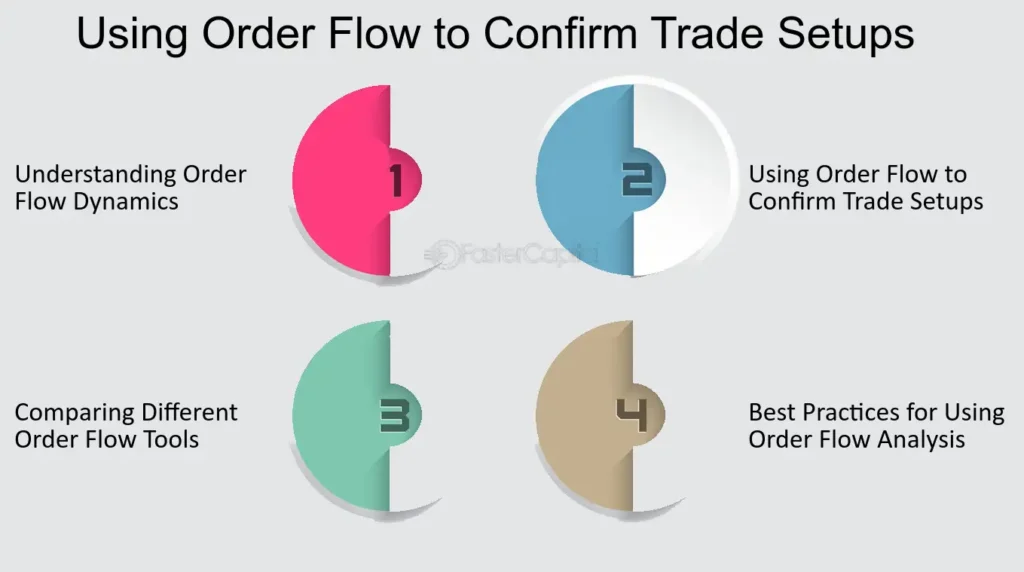
Required Tools and Initial Setup Configurations
Tools Needed:
- Trading Platform: MetaTrader 4 or MetaTrader 5.
- Internet Connection: Reliable and secure internet connection to ensure real-time updates and trading actions.
- FP Markets Account: An active trading account with completed verification.
Initial Setup Configurations:
- Funding Your Account: Ensure your FP Markets account is adequately funded to execute trades. The amount will depend on your trading strategy and the scale of your social trading activities.
- Risk Management Settings: Configure the risk management tools available within the social trading platform to match your risk appetite. This includes setting parameters for maximum drawdown, stop losses, and the proportion of your balance to be used for copying each trader.
- Notifications: Set up notifications to alert you about significant events or changes in the trading strategies you are copying. This can help you stay informed and react quickly if necessary.

How to Choose a Signal Provider on FP Markets
Choosing the right signal provider is crucial for success in social trading, especially on platforms like FP Markets where traders rely on the expertise of others to make investment decisions. Here’s how you can select a reliable and profitable signal provider, including tips on evaluating their performance statistics and understanding associated risk factors.
Criteria for Selecting Reliable Signal Providers
Performance History
- Key Aspect: Look for a signal provider with a consistent and long-term track record of success. Providers should have a transparent history showing profitable trades over several months or years.
- Action: Check the detailed performance stats available on FP Markets, focusing on the profitability across different market conditions.
Risk Management
- Key Aspect: Good signal providers use sound risk management strategies to protect from large losses. This includes setting stop losses and having a clear strategy for managing drawdowns.
- Action: Evaluate the risk management tactics used by the signal provider. This includes their maximum drawdown, risk-reward ratio, and how they adjust to losing streaks.
Trading Strategy
- Key Aspect: The provider’s trading strategy should align with your trading preferences and risk tolerance. Whether they focus on long-term trends, scalping, or other methods, their approach should be transparent.
- Action: Review the description of their trading strategy often provided in their profile. Consider strategies that complement or diversify your own trading approaches.
Cost vs. Benefit
- Key Aspect: Consider the fees charged by the signal provider and weigh them against the potential benefits. High fees can sometimes eat into your potential profits.
- Action: Compare the subscription costs with the average returns the provider has generated over time to determine if the cost is justified.
Tips on Evaluating Performance Statistics
Return on Investment (ROI)
- Tip: Look at the ROI percentage to understand the effectiveness of the signal provider’s strategy over time. A higher ROI indicates a potentially more profitable provider but consider this alongside risk factors.
Consistency of Performance
- Tip: Evaluate how consistent the provider is in achieving positive results. Consistency is often more critical than sporadic high gains, as it indicates stability and predictability.
Win Rate vs. Profit/Loss Ratio
- Tip: The win rate alone doesn’t give the full picture. A provider might have a high win rate but still lose money if their losing trades are much larger than their winning ones. Check their profit/loss ratio alongside the win rate.
Understanding Risk Factors
Leverage Used
- Understanding: Signal providers using high leverage might show higher profits but also represent higher risks. High leverage can lead to significant losses, especially in volatile markets.
- Action: Consider providers with a balanced leverage approach that matches your risk appetite.
Market Conditions
- Understanding: Some strategies work well in specific market conditions. A provider’s past performance might not guarantee future results if market dynamics change.
- Action: Look for providers with strategies that have performed well across various market conditions.
Follower Feedback
- Understanding: Feedback and reviews from other followers can provide insights into the provider’s reliability and the practical aspects of following their signals.
- Action: Read through the comments and feedback on the provider’s FP Markets profile to gauge other traders’ experiences and satisfaction.
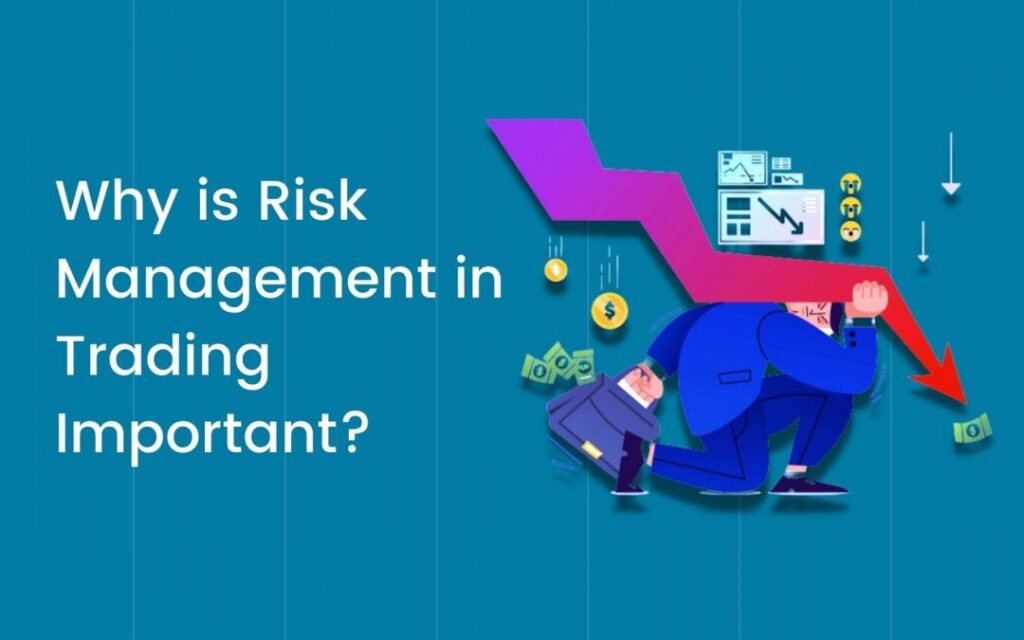
Risk Management in Social Trading
Social trading introduces unique opportunities by allowing traders to copy others’ strategies, but it also requires careful risk management. Here’s a comprehensive look at strategies for managing risks when following other traders on platforms like FP Markets, including setting limits and controlling drawdowns.
Strategies for Managing Risks
Choose Diversified Traders
- Strategy: Avoid placing all your funds with a single signal provider. Diversify your investments across different traders who use varying strategies and instruments. This spreads the risk and can stabilize returns, as different strategies will react differently to market changes.
Understand Trader Strategies
- Strategy: Fully understand the trading strategies of the traders you choose to follow. Ensure their strategies and risk levels align with your own risk tolerance. If a trader frequently engages in high-risk trades, such as using significant leverage or speculative strategies, they may not be suitable for all investors, particularly those with lower risk tolerance.
Use Stop-Loss and Take-Profit
- Strategy: Implement stop-loss orders to automatically close a trade at a specific price to prevent further losses if the market moves unfavorably. Similarly, take-profit orders can lock in profits at a predetermined level before the market potentially reverses.
Setting Limits and Controlling Drawdown
Set Copy Trading Limits
- Action: Determine the percentage of your portfolio that you are willing to risk with each trader. Do not commit too much capital to a single trader, no matter their past performance. A common approach is to use a sliding scale depending on the trader’s risk level and track record.
Monitor and Adjust Investments
- Action: Regularly review the performance of the traders you are following. If a trader’s strategy no longer aligns with your risk tolerance or they consistently perform poorly, consider reducing your investment or stopping copying them altogether.
Control Maximum Drawdown
- Action: Set a maximum drawdown limit to define the maximum loss you are prepared to tolerate. If the drawdown limit is reached, the trading system should stop following the trader automatically. This helps prevent large, unrecoverable losses from accumulating.
Regularly Review Trading Performance
- Action: Continuously monitor the trading results and the overall impact on your portfolio. Use tools and alerts provided by FP Markets to stay updated on significant account changes or market movements.
Psychological Aspects of Risk Management
Maintain Emotional Discipline
- Insight: Social trading can sometimes lead to impulsive decisions, such as following a trader based on recent successes without a full understanding of the risks involved. Maintain discipline and stick to your predefined risk management strategies.
Be Prepared for Volatility
- Insight: Market conditions can change rapidly, affecting the performance of trading strategies. Be prepared for the possibility of volatility and ensure that your investment choices can withstand unexpected market movements.
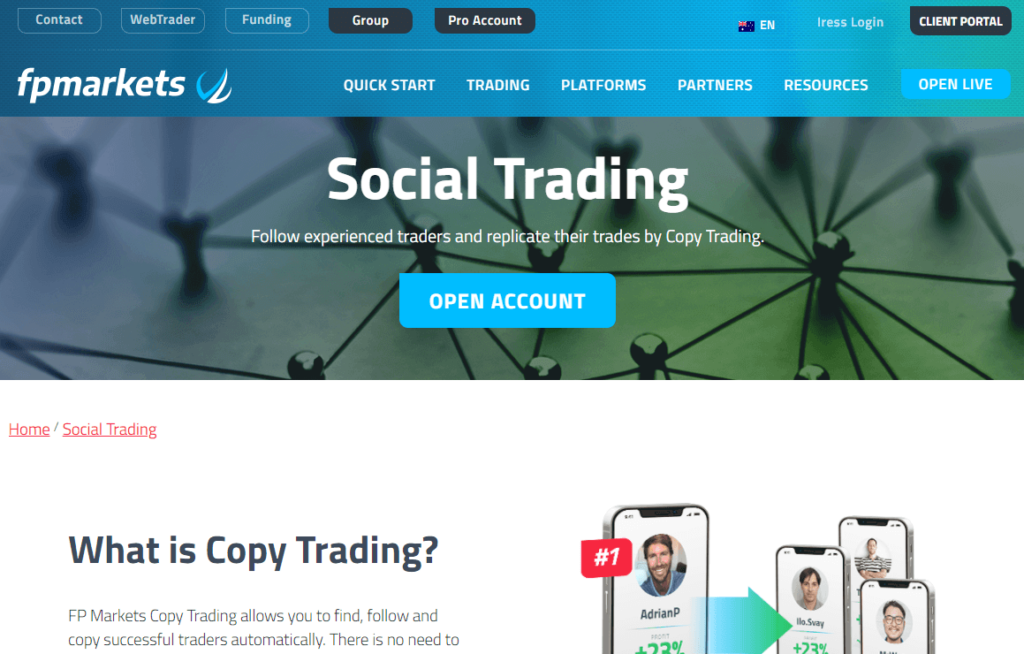
Tools and Resources Available for Social Traders at FP Markets
FP Markets provides a comprehensive suite of tools and resources designed to enhance the trading experience for social traders. These tools are crucial for making informed decisions and maximizing the effectiveness of social trading strategies. Here’s an overview of the key analytical tools and resources available through FP Markets, along with guidance on how to use them effectively.
Overview of Analytical Tools and Resources
Trading Platforms (MetaTrader 4 and MetaTrader 5)
- Description: Both platforms come equipped with advanced charting tools, technical indicators, and automated trading capabilities. These features are essential for conducting in-depth market analysis and executing trades.
- How to Use: Utilize the charting tools to analyze historical price movements and indicators to gauge market trends. Employ automated trading scripts (Expert Advisors) to replicate strategies or test them under simulated market conditions.
IRESS Platform
- Description: An additional offering from FP Markets, IRESS is known for its comprehensive data feeds and more complex trading capabilities, making it suitable for advanced traders.
- How to Use: Access real-time streaming data, advanced charting, and a wide range of technical analysis tools through IRESS to make more informed trading decisions.
Social Trading Platforms
- Description: FP Markets integrates social trading directly into its platform offering, providing tools to copy trades from selected traders seamlessly.
- How to Use: Review the performance stats and trading history of potential traders to follow. Use the platform’s filters to identify top performers based on criteria like return rate, risk level, and trading style.
Economic Calendar
- Description: This tool provides scheduled financial events and indicators that are likely to impact the markets. It’s crucial for preparing for market movements.
- How to Use: Monitor upcoming events to anticipate market volatility. Adjust your trading strategies or copy decisions based on expected news outcomes.
FP Markets Mobile App
- Description: The mobile app offers comprehensive trading functionalities and access to account management, allowing traders to stay connected and trade on the go.
- How to Use: Use the app to monitor your social trading activities and real-time market data. Ensure you’re always updated on your copied trades and can react promptly to any market changes.
How to Use These Tools to Make Informed Trading Decisions
Integrate Tools into Daily Trading
- Strategy: Incorporate the use of these platforms and tools into your daily trading routine. Regularly check the platforms for updates on the market conditions, trader performance updates, and portfolio adjustments.
Data-Driven Decisions
- Strategy: Leverage the data and analytics provided by IRESS and the MetaTrader platforms to back up your trading decisions. Utilize historical data and real-time analytics to inform your choices of whom to copy and which strategies to employ.
Regular Reviews and Adjustments
- Strategy: Use the information and analytics to regularly review the performance of the traders you are copying. If certain traders no longer meet your investment goals or risk profile, adjust your strategy accordingly.
Educational Resources
- Strategy: Take advantage of FP Markets’ educational resources, including webinars, tutorials, and articles. These can provide deeper insights into market dynamics and help you better understand how to use the tools available for more effective trading.
The Community Aspect of Social Trading
Social trading merges financial trading with social networking, creating a community where traders can share insights, strategies, and experiences. FP Markets leverages this concept by providing platforms where traders can engage with each other, benefiting from collective wisdom. Below, we explore the benefits of participating in the FP Markets social trading community and how to effectively engage with other traders.
Benefits of Participating in the FP Markets Social Trading Community
Learning from Experienced Traders
- Advantage: New and less experienced traders can accelerate their learning by observing and copying the trades of more experienced traders. This hands-on learning process can be more impactful than theoretical lessons.
- How It Helps: It allows new traders to understand the reasoning behind trade decisions through real-time observation, providing a practical learning experience that can be difficult to replicate in other formats.
Diverse Trading Strategies
- Advantage: Social trading platforms expose traders to a variety of trading strategies. Each trader may have a unique approach to markets, risk management, and trading timescales (such as day trading vs. swing trading).
- How It Helps: Exposure to diverse strategies enhances a trader’s understanding of the market and broadens their trading horizons, potentially leading to more informed and versatile trading decisions.
Enhanced Market Sentiment Analysis
- Advantage: The community provides a collective insight into market sentiment, which can be a valuable tool for predicting market movements.
- How It Helps: By gauging the mood and trends within the community, traders can better align their strategies with the prevailing market conditions, which might not be as evident through isolated analysis.
Support and Motivation
- Advantage: Trading can be isolating, and the community aspect of social trading can offer moral and motivational support, especially during tough market conditions.
- How It Helps: Being part of a community provides emotional support, which can help maintain a balanced psychological state crucial for consistent trading.
How to Engage with Other Traders and Leverage Community Knowledge
Active Participation in Discussions
- Action: Engage actively in forums and discussion groups available through FP Markets. Ask questions, share your insights, and seek advice from more experienced traders.
- Benefit: Active participation helps you gain visibility and access to valuable insights that are not readily available through passive observation.
Following and Copying Trades
- Action: Use the social trading tools to follow and copy the trades of successful traders. Most platforms allow you to automatically replicate the trading actions of selected traders in real-time.
- Benefit: This allows you to benefit from the experience and skills of successful traders, which can help improve your own trading results.
Sharing Your Own Experiences
- Action: As you gain more experience, share your own trading strategies and results with the community. This can include posting about successful trades or explaining how you manage risk.
- Benefit: Sharing your experiences not only contributes to the community but also helps you reflect on your own practices and improve them.
Attending Webinars and Community Events
- Action: Participate in webinars and other educational events hosted by FP Markets. These sessions are often led by expert traders and analysts and can provide deep insights into market dynamics and advanced trading strategies.
- Benefit: These events are opportunities to learn directly from experts and to ask questions in a live environment, enhancing your understanding and skills.
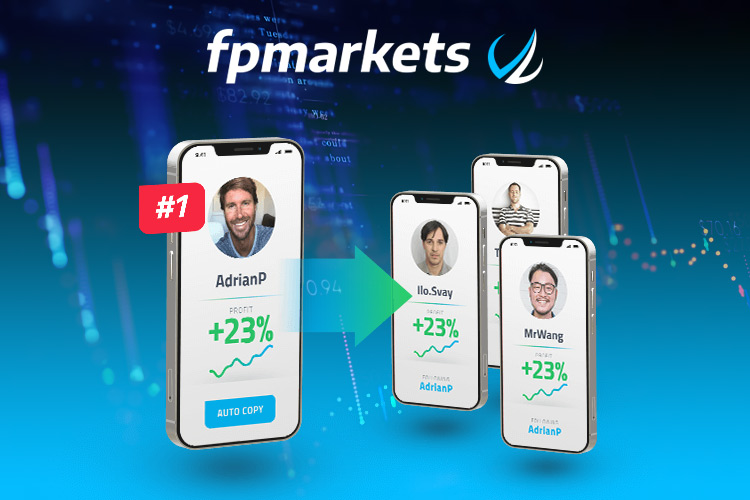
Profit Sharing and Costs in Social Trading at FP Markets
Social trading platforms, including FP Markets, often have unique cost structures compared to traditional trading. Understanding these fees, profit-sharing models, and commissions is crucial for traders to manage their investments effectively and make informed decisions. Here’s a breakdown of the costs associated with social trading at FP Markets and a comparison with traditional trading expenses.
Fees and Commissions in Social Trading at FP Markets
Subscription Fees
- Description: Some social trading platforms charge a subscription fee for accessing the services of top traders. These fees can be monthly or based on a different schedule.
- FP Markets: As of the latest information, FP Markets integrates social trading features without additional subscription fees for access, focusing instead on the trading execution costs that are standard across the platform.
Performance-Based Fees
- Description: Common in social trading, performance-based fees or profit-sharing models mean that you pay a portion of your profits to the traders you copy if they generate a net profit in your account.
- FP Markets: The platform may facilitate arrangements where traders pay a percentage of their profits to the signal providers. These fees compensate the experienced traders for sharing their strategies and are typically calculated based on the profitability they deliver to their followers.
Spread and Commission Costs
- Description: Just like in traditional trading, spread and commission costs apply in social trading when executing trades. These costs are inherent in forex and CFD trading.
- FP Markets: Traders incur normal trading costs, such as spreads and any applicable commissions, which are transparently outlined by FP Markets. These are the same costs you would pay if you were trading on your own without copying others.
Comparing Costs to Traditional Trading Expenses
Traditional Trading
- Spread and Commissions: These are standard in traditional trading and apply whether you are trading independently or through a social trading platform.
- Platform Fees: Some brokers may charge platform or account maintenance fees, although FP Markets generally does not charge such fees for access to MetaTrader 4 or MetaTrader 5.
Social Trading
- Additional Profit Sharing: The unique aspect of social trading involves profit-sharing fees paid to the strategy providers, which do not apply in traditional trading.
- Potential for Higher Transaction Volume: Since you might be copying multiple traders, there could be a higher volume of transactions, potentially leading to higher total commission or spread costs if not managed carefully.
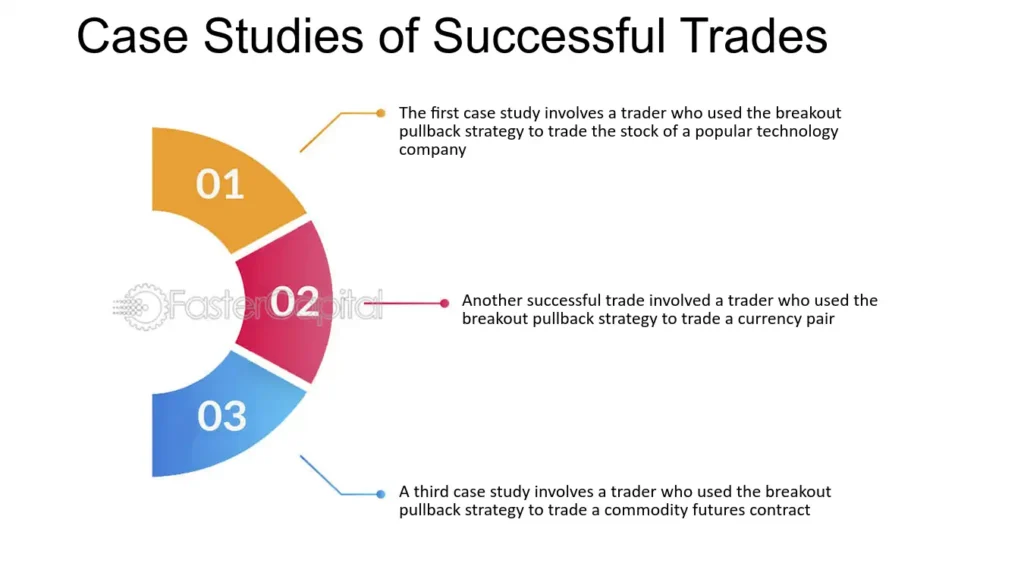
Success Stories and Case Studies of Social Traders on FP Markets
Exploring real-life success stories and case studies of social traders on FP Markets provides valuable insights into effective strategies and the potential benefits of social trading. Here, we detail a few examples of successful traders and outline the key lessons learned from their experiences.
Case Study 1: The Conservative Scalper
Background
- Trader Profile: Jane, a part-time trader who adopted a conservative scalping strategy focused on forex pairs with low volatility.
- Approach: Using FP Markets’ social trading platform, Jane consistently applied small, quick trades during specific times of the day when market volatility was relatively low.
Success Factors
- Risk Management: Jane set strict stop-loss orders and profit targets for each trade, limiting potential losses and locking in profits.
- Consistency: She traded consistently during the most liquid hours, reducing the risk of slippage and benefiting from tighter spreads.
Lessons Learned
- Discipline in Trading: Maintaining a disciplined approach to scalping and sticking to a well-defined strategy was key to her success.
- Effective Use of Tools: Leveraging the real-time analytics and tools provided by FP Markets helped Jane make informed decisions quickly.
Case Study 2: The Diversified Investor
Background
- Trader Profile: Michael, an experienced investor who diversified his trading portfolio across various asset classes, including forex, commodities, and indices.
- Approach: He followed multiple signal providers on FP Markets, selecting those with proven expertise in different markets.
Success Factors
- Diversification: By spreading his investment across different asset classes and strategies, Michael minimized risk and took advantage of various market conditions.
- Selective Copying: He chose traders who not only had successful track records but also demonstrated sound risk management practices.
Lessons Learned
- Importance of Selection: Carefully selecting which traders to follow was crucial, emphasizing the quality of trades over the quantity.
- Ongoing Monitoring: Regularly reviewing and adjusting his selection of followed traders based on performance helped maintain a robust portfolio.
Case Study 3: The Full-Time Day Trader
Background
- Trader Profile: Ahmed, a full-time trader who engaged heavily in day trading of major forex pairs.
- Approach: Utilizing FP Markets’ advanced charting and technical analysis tools, he developed a strategy based on short-term market movements and news events.
Success Factors
- Market Analysis: In-depth analysis and quick response to market news were crucial, leveraging FP Markets’ comprehensive economic calendar and news feed.
- Community Engagement: Ahmed actively participated in the social trading community, sharing insights and learning from others’ experiences.
Lessons Learned
- Adaptability: Being adaptable to market changes and willing to tweak strategies as needed was key to staying profitable.
- Community as a Resource: Using the community not only for copying trades but also as a learning tool, significantly contributed to his trading success.

FAQs and Troubleshooting for Social Trading at FP Markets
Social trading at FP Markets offers a dynamic and interactive platform for traders. However, newcomers might encounter questions and issues as they navigate this system. Below, we address some frequently asked questions about social trading on FP Markets and discuss common issues along with their solutions.
Frequently Asked Questions About Social Trading at FP Markets
Q1: How do I start social trading with FP Markets?
- Answer: To start social trading, you need to first register and verify an account with FP Markets. Once your account is set up, you can access the social trading feature through the client portal. From there, you can view, follow, and copy other successful traders.
Q2: Can I use social trading on both demo and live accounts?
- Answer: Yes, FP Markets offers social trading options on both demo and live accounts. It’s often recommended to start with a demo account to familiarize yourself with the process and mechanics of copy trading without any financial risk.
Q3: How do I choose a trader to follow?
- Answer: Choosing a trader to follow involves reviewing their trading history, profitability, risk level, and trading style. FP Markets provides detailed profiles and statistics for each trader, including their performance metrics and historical data, to help you make an informed decision.
Q4: Are there any fees associated with social trading?
- Answer: There may be performance-based fees or commissions that you pay to the traders you copy, depending on the profits they generate for you. Always review the specific fee structure for each trader before you start copying them.
Common Issues and Solutions for New Social Traders
1: Difficulty Understanding Trader Statistics
- Solution: Spend time learning what each statistic and metric means. FP Markets often provides tutorials and glossaries. Understanding metrics like drawdown, return on investment, and risk level is crucial to evaluate traders effectively.
2: Managing Risk While Copying Trades
- Solution: Use risk management tools provided by FP Markets, such as setting limits on the amount of money you use for copying a trader. Also, diversify the traders you copy rather than relying on a single trader to reduce risk.
3: High Expectations from Copy Trading
- Solution: Set realistic expectations. While social trading can be profitable, it involves risks just like any trading activity. Not all trades will be successful, and profits are not guaranteed. It’s important to start with smaller amounts and increase your exposure as you gain more confidence and understanding.
4: Over-reliance on a Single Trader
- Solution: Diversify your social trading portfolio by copying several traders who use different strategies. This approach can help mitigate losses if one trader’s strategy fails to perform well.
5: Technical Issues with the Platform
- Solution: If you encounter technical problems, check your internet connection first, as many issues stem from connectivity problems. If the issue persists, contact FP Markets customer support for assistance. They can provide technical guidance and help resolve platform-specific issues.

